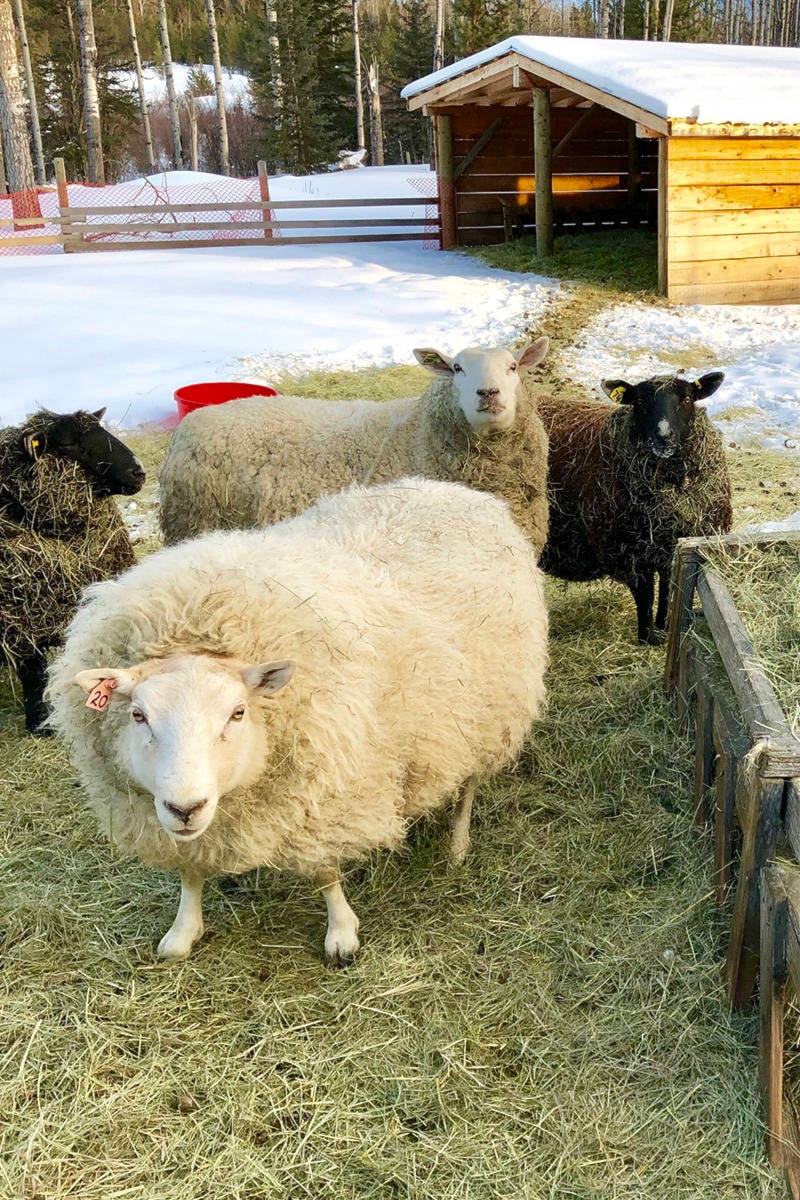A dwindling supply of slaughterhouses in the South Cariboo is taking its toll on local ranchers, who are finding it tougher every year to find local butchers to kill, cut and wrap their meat.
Ron Henneker, a member of the Horse Lake Community Farm Co-Op, recently appealed to the South Cariboo Joint Committee of the Cariboo Regional District to do something about it, saying the situation not only puts stress on ranchers and their stock but means much of the meat raised in the Cariboo will not make it into local freezers. The farm co-op stopped raising beef due to the lack of slaughterhouses and now can’t find anywhere local to take its sheep and pigs, he said.
“Definitely something has to be done or we’re going to continue to ship our sheep to Manitoba, our beef to Alberta and people here in cattle country don’t have a chance to buy beef from next door,” Henneker told the committee.
The situation arose following a decision by the B.C. government in 2004 to put in policies around slaughterhouses that require a meat inspection system in provincially licensed Class A and B abattoirs. Abattoirs are required to have the presence of a trained government meat inspector to inspect each animal or flock beforehand and each carcass after slaughter.
The province is considering more changes this year to increase economic opportunities and strengthen B.C.’s provincial food system. Al Richmond, CRD director for 108 Mile-Lac La Hache, said while he’s pleased to see the province making more changes, he is also skeptical.
“The bottom line has been, ever since they tinkered with it, it drove so many of our slaughter businesses out of business and drove them out because they couldn’t have the Taj Mahal washrooms for meat inspectors,” Richmond said during a recent CRD board meeting. “We’ve lost focus.”
The costs associated with being certified and regularly inspected make small-time slaughter and meatpacking facilities difficult to operate, Henneker explained. Ranchers can still kill and butcher their animals on their own property, but it’s illegal for them to sell that meat without the proper provincial inspections.
READ MORE: Assistance in purchasing hay for Cariboo-Chilcotin ranchers
As a result, most ranchers now have to send their animals hundreds of kilometres away, which means people are beginning to lose their connection with local producers. This is the same across the country Henneker said, where the prevailing attitude seems to be “get big or get out.
Rudy Karlen, of XH Buffalo Ranch near 70 Mile House, is one of the few locally owned provincially-inspected slaughterhouses left in the area. He originally set up his slaughter facilities to process his own buffalo but over time has seen increased demand from cattle ranchers.
Lately, as people with similar facilities have either shut down or announced they intend to do so - mostly because they are getting older - Karlen said he has seen an influx of customers from as far away as Ashcroft to beyond Williams Lake, which he finds “crazy.” The closure of Findlay Meats this year is likely to make it even busier, he said. After 30 years of custom slaughter and processing, Findlay Meats owners Rob and Lia Morrison will be retiring at the end of this year.
“They just keep coming, we have to turn some down,” Karlen said.
Covering the costs of simply killing and not cutting the animals is largely a zero-sum game, Karlen said, because he tends to make only about $30 off each kill and then has to pay Matt Sampson, a young man from Williams Lake that he employs to help out. Finding help to do this work is hard, Karlen said, as there aren’t many young people like Sampson who want to get into this business.
“If I was young, I’d build my own cut-and-wrap place I tell ya,” Karlen said, but noted the provincial regulations in place do make that harder than it used to be.
The now defunct South Cariboo Meat Co-Op had planned several years ago to build a plant for this purpose, but it didn’t go ahead due to the high expenses, Henneker said.
However, he said there are potential options, such as shutting down during the winter when there are no animals to process or having local farmers who use the facility agree to ‘spread out’ when their animals are butchered across the year.
“We’d need storage, walk-in freezers and a facility to do it at and I honestly don’t know how we’d go about doing that. We’ve tried different things over the years and whether it’s because of poor planning or a plan people weren’t willing to accept (it didn’t work out),” Henneker said.
He said there’s still an opportunity to make a career in agriculture with the right infrastructure and supports in place.
Richmond noted while an abattoir is needed for cattle, a facility capable of handling pigs, sheep and chickens might encourage people to produce more of those animals.
He plans to reach out to those who might be interested in starting an abattoir here, but said without any incentives it will be difficult. Some assistance would likely be required from senior levels of government to encourage more people to get into the industry, which would provide both greater food security for the region and greater economic opportunity.
There’s certainly a demand for grass-fed meat still, Richmond said, but the trick will be keeping it local rather than being forced to export it.
“Buy local if at all possible to encourage our ranchers to provide the product and if someone is interested in having this type of facility I encourage them to get a hold of me,” Richmond said. “I’d be happy to have a discussion and see how we can move an opportunity like this forward.”
newsroom@100milefreepress.net
Like us on Facebook and follow us on Twitter.
